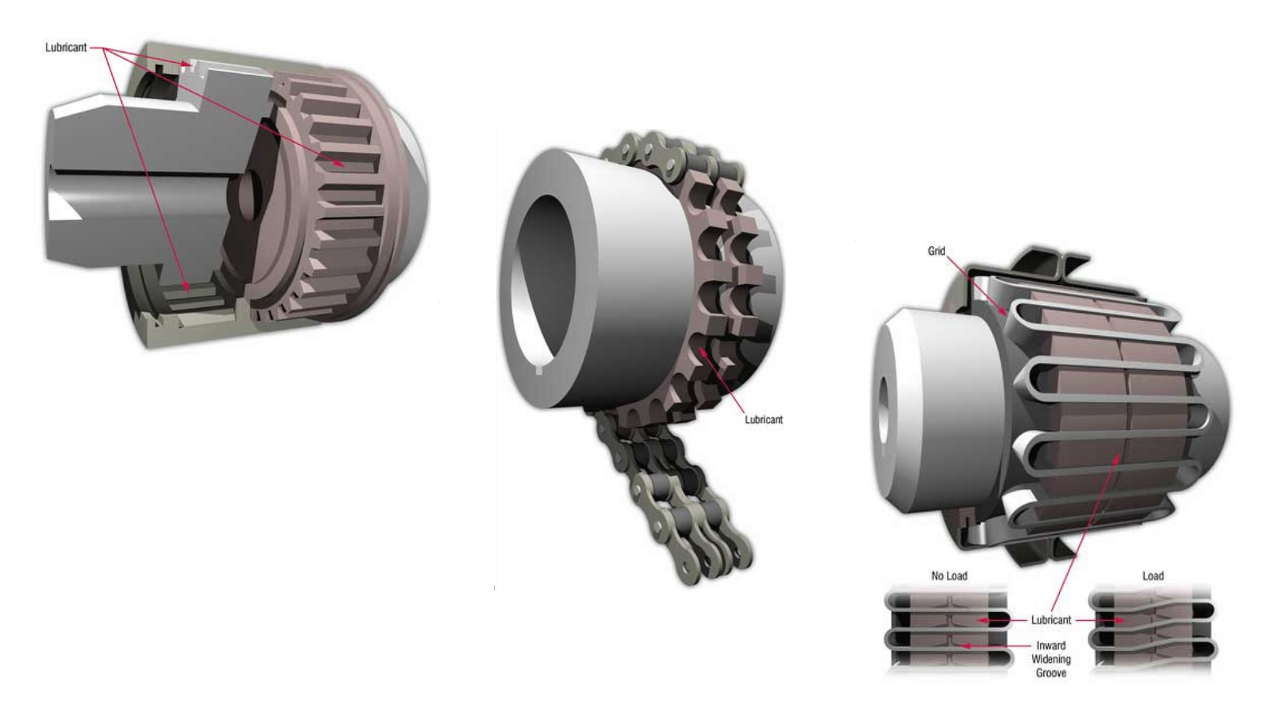Measure to Improve Bearing Lubrication
Ken Bannister, pem-mag.com
Rotating-element bearing manufacturers measure the reliability of their bearings using a Load-Life calculation rating, which is known as the L10 rating life. To achieve its design rating, the manufacturer assumes the bearing will be run in a clean operating environment. This takes into account providing an adequate lubricant film (adequate described as a film equal to, or greater than, the composite roughness of the two mating surfaces) of the correct viscosity for the designed maximum bearing speed and operating temperature ratings.

As a result, reliability is the percentage probability of a group of identical bearings (operated under identical operating and load conditions and expected to reach and surpass their L10 design life expectancy). For L10-rated bearings, the manufacturer claims there’s a probability that 90 percent of the bearings will achieve the published design life expectancy. With the advent of cleaner, and degassed steels used in bearing manufacturing, manufacturers are now able to upgrade the L10 rating to a number of L10a designations that promise even higher reliability percentages.
Unfortunately, the reality is that the vast majority of bearings never achieve their expected L10 life rating. Although no definitive rolling-element bearing reliability rating/failure study has been published, there are many unsubstantiated bearing supplier claims out there, which indicate that as low as only 10 percent of rolling-element bearings actually achieve their L10 life rating! While design engineers may dispute this, most in the maintenance profession wouldn’t find this claim surprising. We recognize that many rolling-element bearings lead a less than ideal life, often subjected to the severest conditions and abuse within the industrial plant environment.
Path to Bearing Reliability
Maintainers know that bearings are designed and maintained to perform in accordance with their actual operating conditions (i.e. load, speed, heat and running time) and will outlive their parent machine’s usefulness—without needing replacement. They’re also acutely aware that most machinery design is a compromise, with manufacturers making little or no adjustments in their design or recommended maintenance schedules for the end user’s unique ambient condition factors. For example, a pillow-block bearing can be used in a HEPA-filtered clean room manufacturing environment—running eight hours per day, set up using a laser aligned and balanced shaft and connected to an engineered automatic lubrication-delivery system.
An exact same pillow block could also be placed in service in a hot and dirty 24-hour operation foundry, set up using a manual “eye-ball” alignment and manually lubricated with a grease gun on an “as needed” preventive maintenance (PM) basis. In this tale of two bearings, it isn’t difficult to determine — with a high degree of certainty — which bearing is most likely to achieve it’s L10 life rating! In both cases, the only assistance offered by the bearing manufacturer is all too general: follow recommended bearing handling and storage recommendations; ensure the bearing is aligned correctly; and lubricate the bearing as necessary with a suitable lubricant.
If rolling-element bearings are to achieve their L10 life expectancy, maintenance departments must set up a lubrication program, which addresses and combats the following major root causes of rolling-element bearing failure: incorrect lubricant; lubricant contamination; over lubrication (heat); and under lubrication (starvation). Let’s first look at the use of incorrect lubricants.
Incorrect Lubricants
If the bearing is to provide sustained reliability of operation, selecting the correct lubricant for the application is essential. Lubricants provide liquid engineering by functioning on many different levels, and are expected to:
- Reduce friction and wear by introducing a hydrodynamic (full separation of moving parts) lubricant film of sufficient strength and thickness (choosing the correct viscosity) to support the load and separate the balls from the raceways. This prevents any metal-to-metal contact;
- Minimize ball and roller-cage wear by reducing sliding friction in cage pockets and land surfaces (anti-wear additive packages formulated in the lubricant);
- Provide a protective coating to prevent oxidation/corrosion (anti-corrosion, anti-foam and anti-oxidation additive packages formulated in the lubricant) of the bearing-rolling elements;
- Act as a fluid barrier seal against outside contaminants; and
- Serve as a heat-transfer agent (re-circulative oil lubrication systems) to cool and conduct heat away from the bearing.
The selection of a suitable bearing lubrication requires decisions around whether to choose oil or grease, and determining what additive package is required. This is governed by the operating load and condition factors under which the bearing operates. As maintainers, we’re not expected to formulate lubricants and must solicit assistance from a reputable lubricant manufacturer/supplier. Through the use of the correct lubricant, performing an engineered lubricant-consolidation program is an essential first step in achieving bearing reliability.
Lubricant Contamination
Contaminants are literally “bearing assassins,” with the biggest culprits being dirt and water. Contamination avoidance is completely achievable through the use of dedicated transfer and clean filtration equipment both on transfer equipment and re-circulative lubrication systems. A good example is an inexpensive bulk oil-fluid transfer/filter-cleaning cart. Grease guns are prone to finding dirt. If part f your lubrication program, they must be wiped clean after every application and identified for dedicated grease use to avoid cross contamination of fluids in a bearing.
Bulk fluids should be tested and analyzed to determine their fluid cleanliness and additive package formulation before use to see if they’ve been delivered up to specification. This is especially important in large reservoir oil systems that lubricate many bearings simultaneously. Both oils and grease should be kept out of the elements to avoid water and rust entering through the barrel top bung.
Over Lubrication
Excessive heat is a common problem found in many manually greased bearings that have received too much grease. Virtually no two grease guns are alike in their grease displacement; a single shot in one grease gun can amount to five or more shots in a different-style gun. Yet, a PM task may ask for two shots of grease, which results in over greasing. Furthermore, a good-hearted maintainer may contribute to the problem by choosing to add an extra “shot or two” in the mistaken belief that more grease is better!
Bearing cavities are designed to operate with a grease charge of less than 50 percent; filling the cavity until the grease passes by the seal is more than two times the required amount of grease. Excess grease causes internal fluid friction in the bearing. In turn, this creates a significant rise in bearing temperature, resulting in reduced bearing life and a greater increase in energy use. Ensure all grease guns in the plant deliver the same amount of grease displacement. Also look into training to determine bearing requirements and how to effectively operate a grease gun.
Under Lubrication
Many bearings are simply starved to death, receiving little or no lubrication throughout their short life. Reasons are many and include simple neglect to incorrect lubrication intervals to failed lubrication-delivery devices and equipment. Bearings must be monitored when setting up the initial lubrication program to ensure lubricant intervals aren’t too frequent — causing over lubrication and not too infrequent—causing under lubrication.
Ken Bannister is an internationally recognized expert in implementing lubrication management programs and best practices. He’s also the author of “Lubrication for Industry” and the newly published “Machinery’s Handbook,” 28th edition section on lubrication (Industrial Press)
Related Articles

The Lubrication Requirements of Couplings

The Building Blocks to Creating an Effective Lubrication Program

Does Lubrication Belong in the CMMS?

Water Contamination

Ultrasound for Better Lubrication

Top Ten Ways Not to be World Class at Machinery Lubrication




